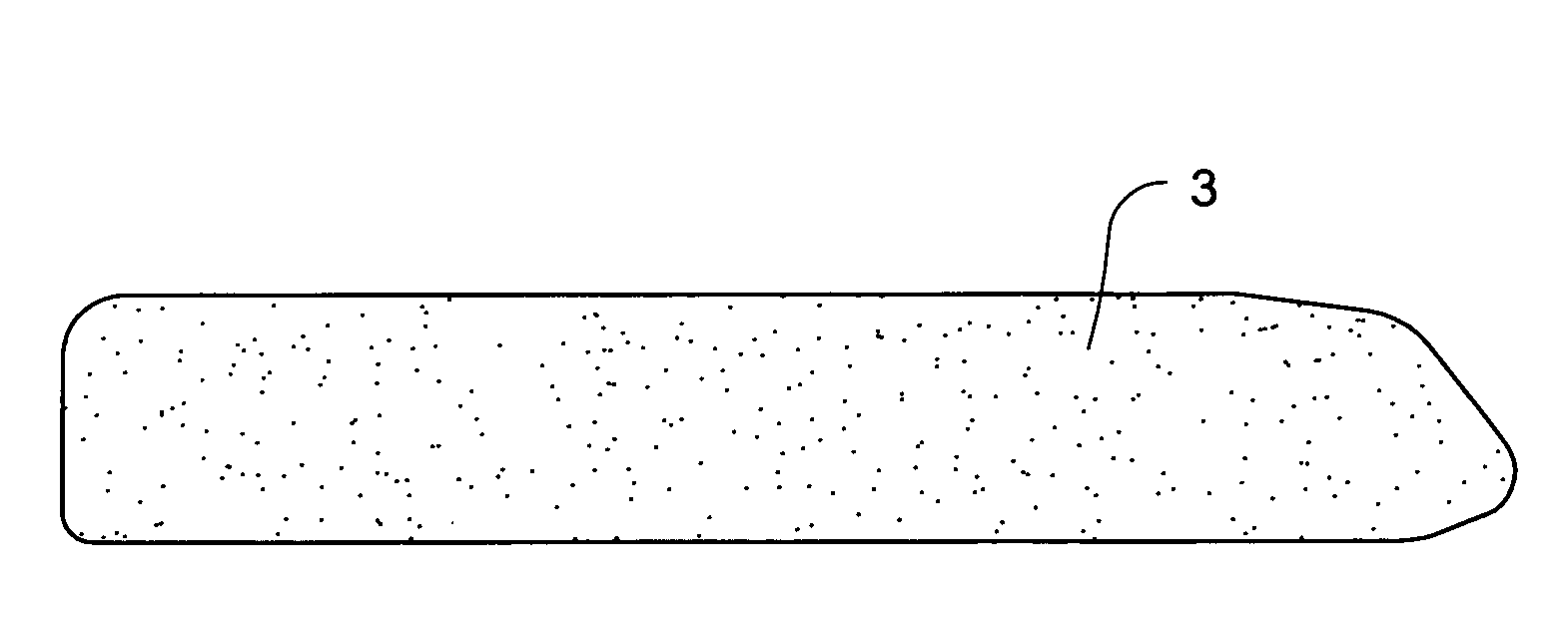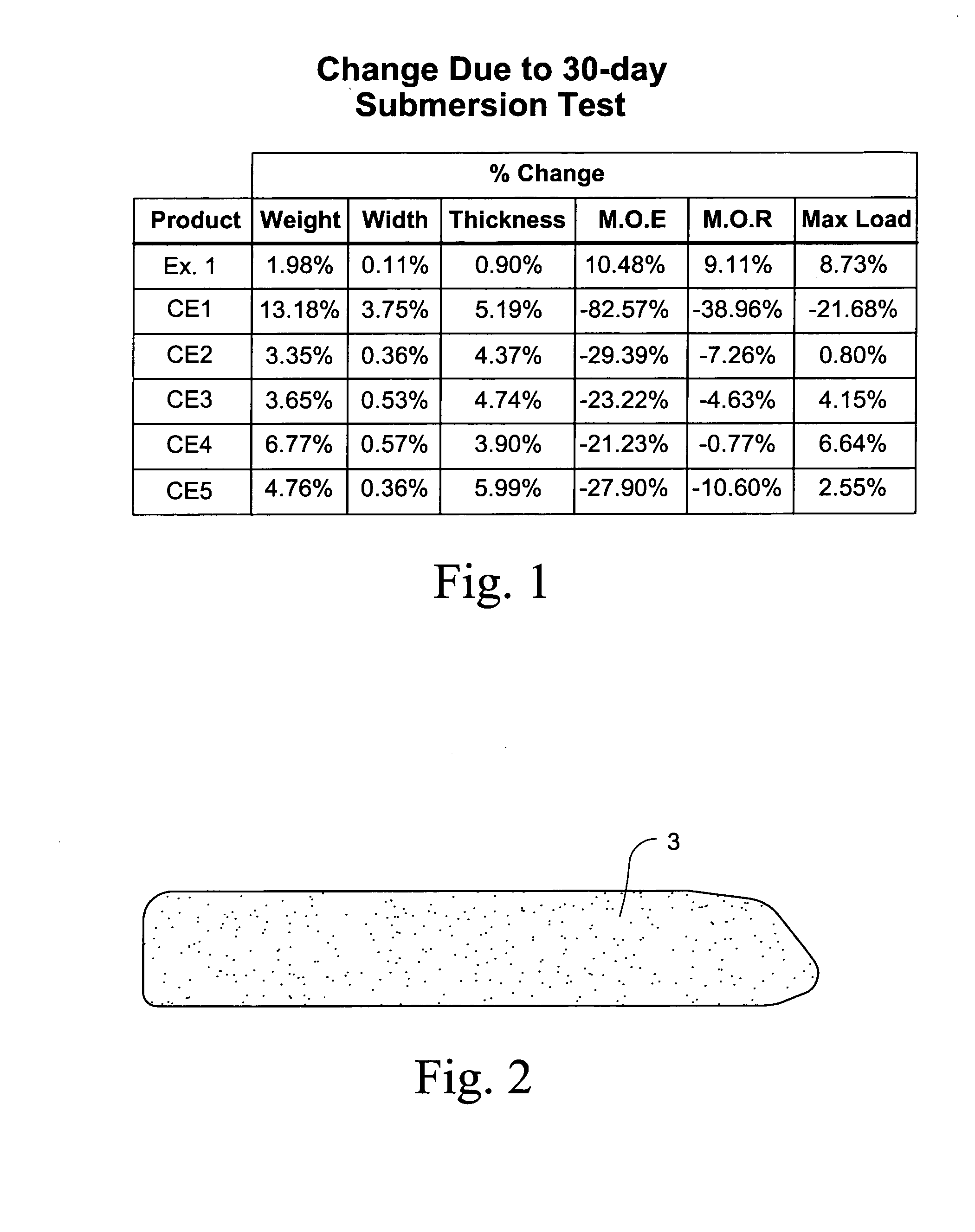Foamed polymer fiber composite lumber
a composite lumber and foam technology, applied in the field can solve the problems of undesirable staining, limited commercialization of foam polymer fiber composite lumber, and lack of typical conventional composite lumber in certain respects, and achieve the effects of less weight gain, easy cutting/sawing, and easy screwing
- Summary
- Abstract
- Description
- Claims
- Application Information
AI Technical Summary
Benefits of technology
Problems solved by technology
Method used
Image
Examples
Embodiment Construction
[0005]Certain example embodiments of this invention relate to a composite lumber product include from about (i) 38-46% wood fiber (more preferably from about 40-44%, and most preferably about 42%), (ii) 0.2-5.0% foaming agent (more preferably from about 0.4 to 1.5%, and most preferably about 0.7%), and (iii) 46-60% polymer such as homopolymer polypropylene (more preferably from about 48-56%, and most preferably about 52-53%). Optionally, the lumber product may also include one or more of from about: (iv) 0.5 to 5% lubricant (more preferably from about 1-2%), (v) 0.5 to 6% pigment (more preferably from about 1-4%), and / or (vi) 0.4 to 5.0% coupling agent (more preferably from about 0.6 to 2.5%, and most preferably about 1.4%).
[0006]Surprisingly, it has been found that a composite lumber product having the chemical make-up as set forth above is surprisingly less subject to moisture absorption thereby leading to a more stain resistant product and a product less likely to absorb moisture...
PUM
| Property | Measurement | Unit |
|---|---|---|
| weight | aaaaa | aaaaa |
| thickness | aaaaa | aaaaa |
| width | aaaaa | aaaaa |
Abstract
Description
Claims
Application Information
 Login to View More
Login to View More - R&D
- Intellectual Property
- Life Sciences
- Materials
- Tech Scout
- Unparalleled Data Quality
- Higher Quality Content
- 60% Fewer Hallucinations
Browse by: Latest US Patents, China's latest patents, Technical Efficacy Thesaurus, Application Domain, Technology Topic, Popular Technical Reports.
© 2025 PatSnap. All rights reserved.Legal|Privacy policy|Modern Slavery Act Transparency Statement|Sitemap|About US| Contact US: help@patsnap.com


